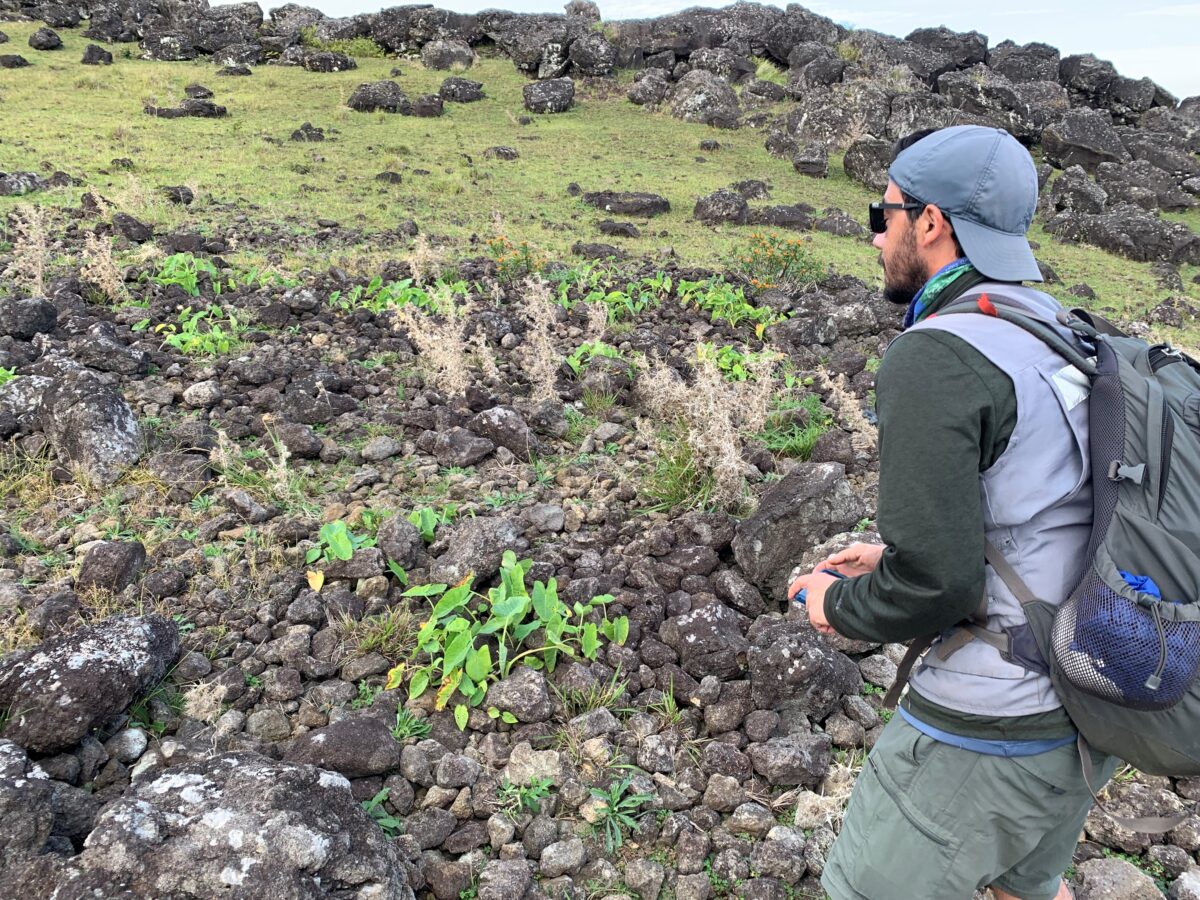New methods estimate the size of Easter Island’s pre-contact population — and debunk a persistent myth
A detailed analysis of the island’s rock gardens shows that a hypothetical population crash never occurred

You’re probably familiar with this story: Once upon a time, people on a faraway island lived beyond their ecological means, cutting down all their trees to build massive stone statues. The population crashed along with the environment, dwindling to a few thousand people by the time Europeans “discovered” Easter Island in 1722.
There’s just one problem: Recent research shows that there were never many people on Rapa Nui in the first place.
A paper recently published in Science Advances uses modern technology to more accurately gauge the number of rock gardens on the island and Rapa Nui’s pre-contact food production. Co-authors of “Island-wide characteristics of agricultural production challenges the demographic collapse hypothesis for Rapa Nui (Easter Island)” include Binghamton University anthropology alum Dylan S. Davis ’17, MA ‘18, now a post-doctoral fellow at Columbia University’s Climate School; Binghamton University Environmental Studies Research Development Specialist Robert J. DiNapoli; Gina Pakarati, an independent researcher on Rapa Nui, Terry L. Hunt of the University of Arizona’s School of Anthropology; and Binghamton University Professor of Anthropology and Environmental Science Carl. P. Lipo.
The volcanic island was formed from eruptions a million years ago, giving the rain ample time to wash away the potassium, phosphorus and nitrogen plants need to grow, Lipo added. The salt-laden ocean spray further hurt soil fertility.
“The soils on Rapa Nui were never particularly productive,” Lipo explained. “When people reached the island, they had to deal with those constraints.”
Their first method was slash-and-burn agriculture, which involved cutting down the island’s trees. This temporarily returned nutrients to the soil, but once the trees ran out, the islanders resorted to other methods: composting plant waste and rock mulch.
The fertility benefits of composting aren’t enough to support a culture’s food supply. Rock mulch did — but it was a highly labor-intensive process. Islanders broke off parts of the exposed bedrock and then turned these chunks of stones into the soil, which both restored nutrients and protected it from further weathering.
Rock mulch has been traditionally used in other places, such as among the Maori people in New Zealand, Indigenous peoples in the American Southwest and in the Netherlands, Lipo said.
“We do it ourselves with non-organic fertilizer; essentially, we use machines to crush rock into tiny pieces, which is effective because it exposes a lot of surface area,” Lipo said. “The people in Rapa Nui are doing it by hand, literally breaking up rocks and sticking them in dirt.”
While the gardens could grow dry-land taro and yams, the primary crop was sweet potatoes of dozens of different varieties, DiNapoli said.
Not every rock pile is an ancient garden, however.
How many gardens were on Rapa Nui?
When they first encountered the island, Europeans reported that 10% of the land was covered by gardens. Researchers have previously relied on satellite imagery to map rock gardens, but that resulted in misidentifications — including, for example, roads.
Davis used shortwave infrared (SWIR) satellite imagery and machine learning to generate a more accurate estimate: around 180 acres were covered by mulching stones, much less than previously believed.
Primarily used for geological mapping, SWIR imagery can differentiate between mineral compositions and moisture content, Davis said. The distinct mineralogical characteristics and moisture patches allow the rock gardens to stand out better from their surroundings.
Using the updated estimate of the number of gardens, the researchers calculated that approximately 3,000 people lived on Rapa Nui at the time of European contact. The earliest European accounts indicate a population of 3,000 to 4,000 people, which tracks with the artifacts discovered on the island, Lipo said.
“What we’re actually seeing here is that the island couldn’t sustain that many people to begin with based on ecological constraints,” Davis said. “People actually modified their landscapes to increase the amount of what they could intensively cultivate and that number was still very small. This isn’t an example of ecological catastrophe but of how people survived despite really limited natural resources in a fairly sustainable way for a long time.”
The misconceptions about the island’s population size come from its large and striking moai statues, Lipo said, and the assumption that it would take large groups of people to erect such statues. Ecologists also tend to use Easter Island as a model for how population size can lead to ecological catastrophe.
“We can’t use Easter Island as an example that’s convenient for stories,” he said. “We need to understand the island in its own context because what it’s really telling us is something very different than what people believe.”

